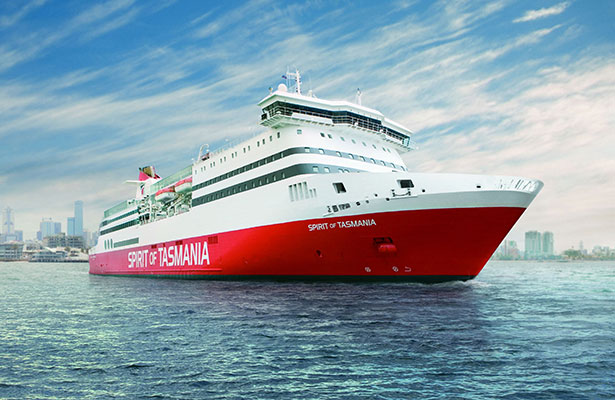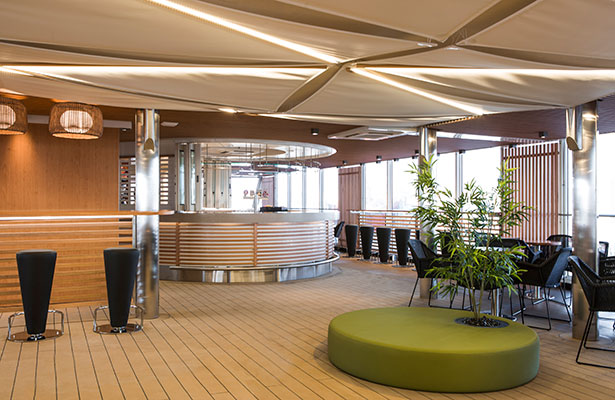Cape Wickham is creating headlines around the golf world, and Barnbougle Dunes is Aussie golf course royalty. But Tasmania has many unheralded tracks that’ll make your whirlwind golf tour of the Apple Isle unforgettable. The historic Ulverstone Golf Club [below] is your first stop, located only 15 minutes from the Spirit of Tasmania port. This tranquil little 6,100-metre layout is best played between September and November, when the rhododendrons bloom. After your round, sample the culinary delights of its Nineteen (XiX) restaurant. While you’re in Tasmania’s third-largest city, Devonport Golf Club must be played. Sitting atop a beautiful peninsula overlooking the Mersey River and designed by Vern Morcom (the architect behind Royal Hobart), this par-70 layout measures 5,947m and boasts delightful views, an invigorating golfing challenge and the chance to see some local wildlife.
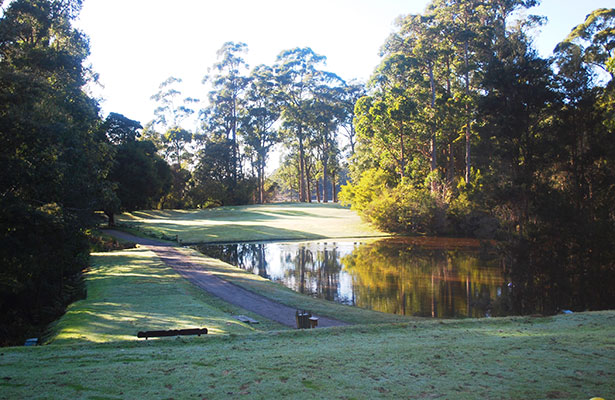
Then, it’s on to Country Club Tasmania, an ideal starting point if you opt to fly into Launceston. Only a 10-minute drive from the airport, this championship course and resort is the ultimate destination for a guys golfing getaway – enjoy the boutique casino and sports bar, five restaurants and four enjoyable bars. But it’s not just the lads who are catered for – couples flock to Country Club Tasmania for the 5-star suites and self-contained villas, in addition to the paddock-to-plate dining at the award-winning Terrace restaurant. Here, you’ll find a cellar boasting a 1200-bottle, temperature-controlled Tasmanian blackwood wine room. Sample some of Tassie’s finest drops, including the nearby Tamar Valley, and an extensive international collection. Country Club Tasmania is also partnered with Barnbougle Dunes to offer golfers Tasmania’s Ultimate Golf Package. Also close to the airport is Launceston Golf, Club, believed to be the oldest 18-hole golf course in the state and the fifth oldest in Australia. With a par-72 layout of 6,013m, the course is situated between the leafy suburb of Norwood and bustling shopping centre of Kings Meadows – 5 kilometres south of Launceston CBD and 12km from the Airport.
Then it’s a short trip down the Meander Valley Highway to a truly special part of Tasmania – Quamby Estate Golf Club. This charming, rustic country golf club resembles a nine-hole layout carved out of a Tasmanian farmer’s spare land. Towering, mature trees line each hole as you walk the very gentle changes in elevation, breathing in the fresh country air and burning firewood. This track punches well above its weight and is easily Tasmania’s best nine-holer. Twice round, it commands a par of 76 measuring 6,847m. The eighth hole is Tasmania’s longest par 5 at 576m, while other challenges are offered through nine lakes, cascades, creeks and challenging ‘Scottish’ bunkers beautifully groomed from refined Scottsdale sands. Post round, dinner and wine in the Georgian clubhouse (built in the 1850s) completes this incredibly unique golfing experience.
The state capital also boasts several spectacular layouts. Tasmania Golf Club is bordered by water on three sides and situated on the picturesque Barilla Bluff, only 15 minutes east of Hobart’s CBD. The undulating layout features tree-lined fairways, picturesque views, strategic bunkering, fast and true putting greens, as well as a clubhouse bar and restaurant.
No trip to Tassie would be complete without a visit to Royal Hobart Golf Club, founded in 1916. Changes have been made to Morcom’s original design, but the layout has maintained its early Australian bushland feel. Some of golf’s greatest players have tested their mettle at Royal Hobart – the legendary Jack Nicklaus claimed the Australian Open here in 1971. The Golden Bear also held Hobart’s course record with a 65, until Jason Day came along with a 64 … as he does.
Hanging out in HOBART
Australia’s second-oldest city is a port packed with history, culture and plenty of seafood. Staying at the Henry Jones Art Hotel in Salamanca Bay is essential. Not just because of its convenient location to a host of seafood restaurants, but because this boutique accommodation offers free history tours and a special gift upon checking in – an information pack of your surname searched among a database on convicts who arrived in Hobart. Discover your (potential) ancestors, and the year and ship of their arrival. While you’re here, check out the unique craft beers at the Jack Greene bar, or take the kids to a seafood dinner at the Drunken Admiral.
Need an excuse to get down here?
Team up with dad and take on the field at the annual Tasmanian Father Son Golf Championship. In its 10th year, the three-day event takes you to Country Club Tasmania, Launceston GC and Mowbray GC from November 27-29. The first round is a two-ball ambrose, the second is a Canadian foursome format and the final is a combined stroke event, with the winning aggregate father-son scores to receive a trip to the same event in South Africa.
Get your wheels to Tassie on the Spirit of Tasmania
The Spirit of Tasmania has always been a fantastic way to travel to the island state, but now it’s even more luxurious following a major makeover. With fresh, modern interiors and stylish new facilities, there’s no better time to set sail and enjoy a magnificent journey across the Bass Strait. Taking your car to Tassie avoids forking out money for a hire vehicle, airport parking and taxi costs. With the Spirit’s ‘roll-on, roll-off’ policy, you’ll hit the ground running upon your arrival in Tassie.
Sail in style in the new-look deluxe cabins, each refurbished with a queen-size bed, private ensuite and flat-screen TV. The icing on the cake? Twin porthole windows now allow guests to enjoy a front-row seat to the visual spectacle that is Bass Strait. Twin-bed cabins and four-bed cabins are also available.
On board, you’ll be entertained from start to finish with live music in the Terrace Lounge Bar. You can also head to Bar 7 for a selection of Tasmanian premium cool-climate wines, world-class ciders, local craft beers and some of Tasmania’s finest quality whisky. Or, check out the popular Top Deck Lounge for a relaxing drink with infinite ocean views. Night sailings depart both Melbourne and Devonport nightly at 7.30pm and arrive the following morning at 6am. For more information, go to spiritoftasmania.com.au
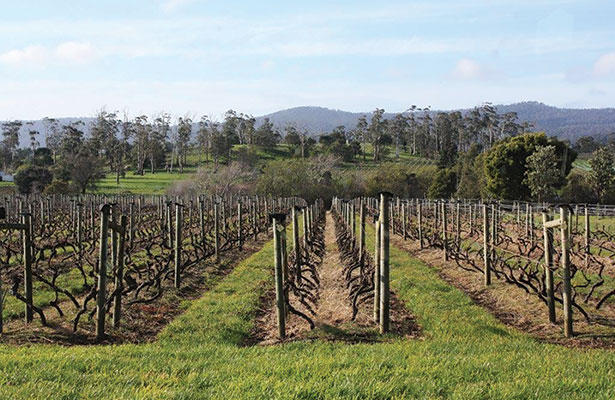
A Vineyard With A Difference
Did you hear the one about the Indian and the Australian who walked into a winery?
The Mani family purchased Iron Pot Bay Vineyard upon their return to Australia in 2013. After 17 years in the United States, and with no viticulture experience, Ashok, Julieanne, Ashli and Liam jumped in the deep end. Crazy or brave? Maybe a bit of both. But as Julieanne often says to her visitors, “I’m still smiling after two years.”
On old sailing charts, the nearby water was recorded as Iron Pot Bay, hence the vineyard name. Planted in 1988 in Rowella, in the beautiful Tamar Valley, the Manis are currently nurturing the vines for their 25th vintage.
“With five hectares under vine; Pinot Gris, Chardonnay, Sauvignon Blanc, Semillon, Gewürztraminer, Pinot Meunier and Pinot Noir, we hand-prune, hand-pick and irrigate from the property dam, or Lake Roderick as it is affectionately known,” says Julieanne. Plans are underway to renovate the 108-year-old cottage adjacent to the vineyard into the Iron Pot Bay cellar door and tasting rooms. Designed by master architect, Alexander North, the cottage boasts timber floors and fireplaces throughout. The acreage boasts splendid hundred-year-old trees and stunning views of the vineyard, perfect for summer picnics with fine wine and local produce.
Iron Pot Bay Vineyard is a rustic and peaceful spot and as part of the Tamar Valley Wine Route, visitors can pick up a local wine tour or self-drive. With excellent cool climate, award winning wines and “a story in every bottle”, the Mani family invite you to come be part of their history.
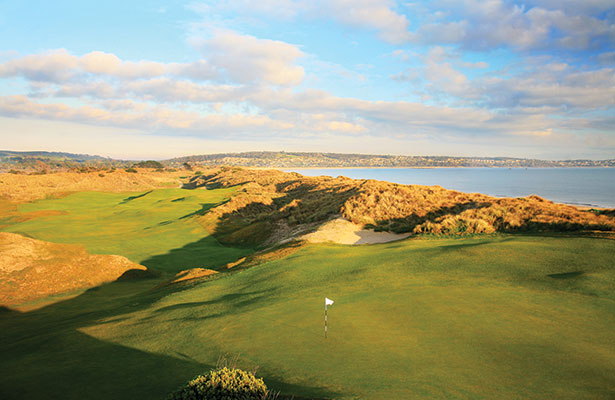
Barnbougle Dunes
World’s 100 Greatest Golf Courses: No.11
Barnbougle Dunes is where reality trumps expectation – few golf courses in the world exceed hype like Barnbougle Dunes. The golf world has drooled over photos of its spectacular geographical location on Tasmania’s northeast coast, and dreamt about playing the undulating links layout nestled between the ocean and towering sand dunes. Any golfer can tell you how Barnbougle Dunes ranks No.4 in Australian Golf Digest’s Top 100 Courses, or that it created headlines in the same year when voted the world’s 11th best course by Golf Digest (US). But when your time comes to actually play it, you’ll have to fight the urge to constantly get out the camera. But don’t worry, your memory won’t let you forget Barnbougle Dunes. Playing across the saddles of land on the opening nine will be carved into your memory as easily they were from their foundations. You will remember the openness of the back nine, and the striking green complexes that tower over you on the fairway. You’ll stop and sit down in Reg’s Hut, between the fourth green and fifth tee, and soak up the views across Bridport and out to Bass Strait. You may even walk down the steps to the beach. You will appreciate, when the wind gets up, why Greg Norman once hit a 3-iron into the signature hole – even though it’s a par-3 measuring 112m. You’ll feel challenged on the 446m, par-4 eighth hole, then you’ll enjoy a bit of a break taking on the 254m, par-4 12th. You’ll be tested on the remaining tough finishing holes, and you’ll enjoy a post-round drink in the toasty, rustic clubhouse. Best of all, you’ll return to Barnbougle Dunes to do it all again.
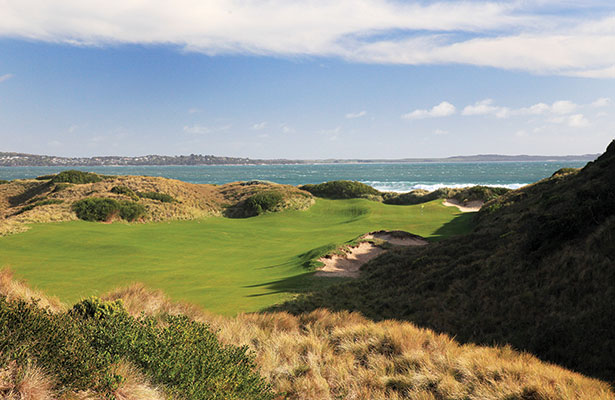
Lost Farm
World’s 100 Greatest Golf Courses: No.23
The second installment at Australia’s world-renowned Barnbougle property on the northeastern tip of Tasmania, Lost Farm serves up breathtaking links golf in its most natural form. Owned by Aussie potato farmer Richard Sattler and designed by American visionary Bill Coore, Lost Farm derived its name from the flat, central paddock on the site, a place where farmers would regularly find missing cattle seeking refuge from the elements. But there’s no hiding from the weather these days. Lost Farm’s rugged terrain was such that Coore left his canvas relatively untouched, cleverly combining an opening stretch of flatter holes with a heart-raising journey through expansive valleys and four absolute showstopper-holes that are brutally exposed along the windy shores and atop beachside dunes.
Not short of highlights, Lost Farm’s star attraction is the drivable par-4 14th [above], played directly towards crashing waves rolling in off Bass Strait and into a skinny, concave green. For those unwilling to flirt with disaster, laying-up leaves a short wedge approach into a green now significantly above your feet and only a few paces wide. As with Coore’s more sinister 14th hole at Bandon Trails in America, this is one of those rare modern gems that mix beauty with sound strategy and originality, making it one of the more iconic holes in Australia. This is golf how it’s meant to be played.
Not surprisingly, many sacrifices were required to complete this 20-hole patch of golfing paradise, none bigger than the one made by Sattler’s loving wife Sally. The gorgeous, short par-3 fourth, which overlooks neighbouring Barnbougle Dunes golf course, is known as Sally’s Point, for this is where she wanted to build her dream family home.
Unfortunately for Sally the golf course won that battle and has been a winner ever since, continuing to receive rave reviews from international visitors.

